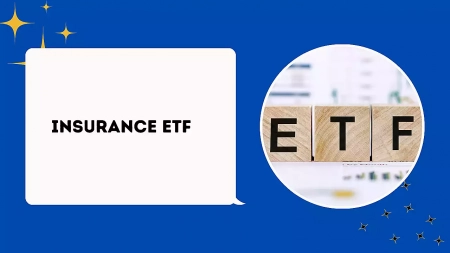Insurance ETF – What are the Benefits of Investing in Insurance ETFs
Insurance ETF also known as Exchange-Traded Fund is a type of investment fund and exchange-traded product and investment fund that has shares that may be exchanged on a stock exchange.
READ ALSO: Insurance General – How can I buy Insurance General Policies
It invests in the stocks of companies that offer a range of insurance policies, such as financial guarantees, reinsurance, life insurance, property and casualty insurance, personal and commercial lines, and insurance brokerage.
It is an exchange-traded fund that focuses on investing primarily in companies operating in the insurance industry.

What is an Insurance ETF?
Insurance Exchange-traded funds (ETFs) are specifically designed to provide exposure to the insurance industry to investors so they can take advantage of the sector’s potential development and stability.
These ETFs offer investors a handy option to participate in the insurance industry without having to choose individual stocks because they typically carry a diverse portfolio of insurance companies.
Popular Insurance ETFs
Here are some examples:
- SPDR S&P Insurance ETF (KIE).
- iShares U.S. Insurance ETF (IAK).
- Invesco KBW Insurance ETF (KBWI).
- Invesco KBW Property &Casualty Insurance ETF (KBWP).
- First Trust NASDAQ Insurance ETF (FTHI).
However, you should check the ETF’s prospectus to understand its holdings, fees, and investment objectives.
What are the Benefits of Investing in Insurance ETFs?
Investing in insurance exchange-traded funds has several benefits. They include:
- Diversification: By exposing investors to a wide range of insurance businesses, insurance exchange-traded funds (ETFs) help distribute risk.
- Flexibility: It is available for purchase and sale at market prices throughout the trading day, just like any other ETF.
- Lower costs: ETFs are a more affordable investing alternative than mutual funds since they often have lower expense ratios.
- Stable returns: Given the insurance sector’s reputation for resilience and stability, insurance exchange-traded funds may be appealing choices for investors looking for long-term, consistent returns.
- Growth potential: The need for insurance services and products tends to rise as economies and populations throughout the world expand, which might propel growth for businesses in the insurance industry.
These are among the various benefits.
Factors to Consider When Investing in Insurance ETFs
It is essential to consider the following factors before investing:
- Industry trends: Knowledge of the general patterns and workings of the insurance sector can assist investors in making wise choices. Interest rates, tax laws, and general economic conditions are just a few examples of variables that can have a big impact on insurance firms and, by extension, insurance ETFs.
- Diversification: It’s critical to evaluate how diversified an insurance ETF’s holdings are. A well-diversified exchange-traded fund can aid in reducing the risks connected to certain insurance industry companies or subsectors.
- Expense ratios: An ETF’s expense ratio shows the yearly cost levied by the ETF provider. Higher total returns may be a result of lower expense ratios.
- Performance history: Examine the ETFs’ past results to gauge their growth potential and consistency. Although past performance cannot guarantee future outcomes, it might offer insightful information.
Investors should also take their time horizon, risk tolerance, and investing goals into account. ETFs for insurance can make a good addition to a diverse portfolio, but it’s crucial to match the investment with the goals and preferences of each investor.
YOU MAY LIKE: Insurance USPS – How Much Does Insurance USPS Cost
How to Invest in Insurance ETF
Investing in an insurance ETF requires the following steps:
- Visit the official website of insurance exchange-traded funds that are on the market like iShares U.S. Insurance ETF (IAK) at https://www.ishares.com
- Open an account if you don’t already have one for investments, give the relevant personal information, and carry out any processes needed for verification.
- After creating an account, enter your login information to log in.
- Navigate to the IAK fund page and examine the key details including the fund’s performance, fees, and investment goals.
- Look for the “How to buy” section and click on it to proceed.
- Choose your investment amount and select the investment method that suits you.
Check the specifics of your investment, such as the amount, kind of order, and costs, and verify your order by clicking the relevant button.
Frequently Asked Questions
Below are frequently asked questions.
What are Insurance ETFs?
Insurance ETFs are exchange-traded funds (ETFs) that concentrate on companies in the insurance sector. A diversified portfolio of insurance-related equities is often included in these exchange-traded funds (ETFs), giving investors exposure to the performance of the insurance industry.
What are the Advantages of Investing in Insurance ETFs?
Investing in insurance exchange-traded funds (ETFs) gives investors exposure to the market without requiring them to choose specific insurance stocks. It lowers the risk associated with owning a single company, diversifies investments across several companies in the industry, and presents opportunities for long-term growth as insurance companies capitalize on market trends and client demand.
Which Risks Come with Investing in Insurance ETFs?
Investing in insurance exchange-traded funds (ETFs) carries various risks. Common hazards include interest rate variations, company-specific risks, market volatility, and economic downturns that impact the insurance sector. When investing in insurance ETFs or any other kind of investment, it’s critical to thoroughly evaluate these risks and take your risk tolerance into account.
Conclusion
Through accessible and varied means, investors can obtain exposure to the insurance industry through insurance exchange-traded funds (ETFs).
